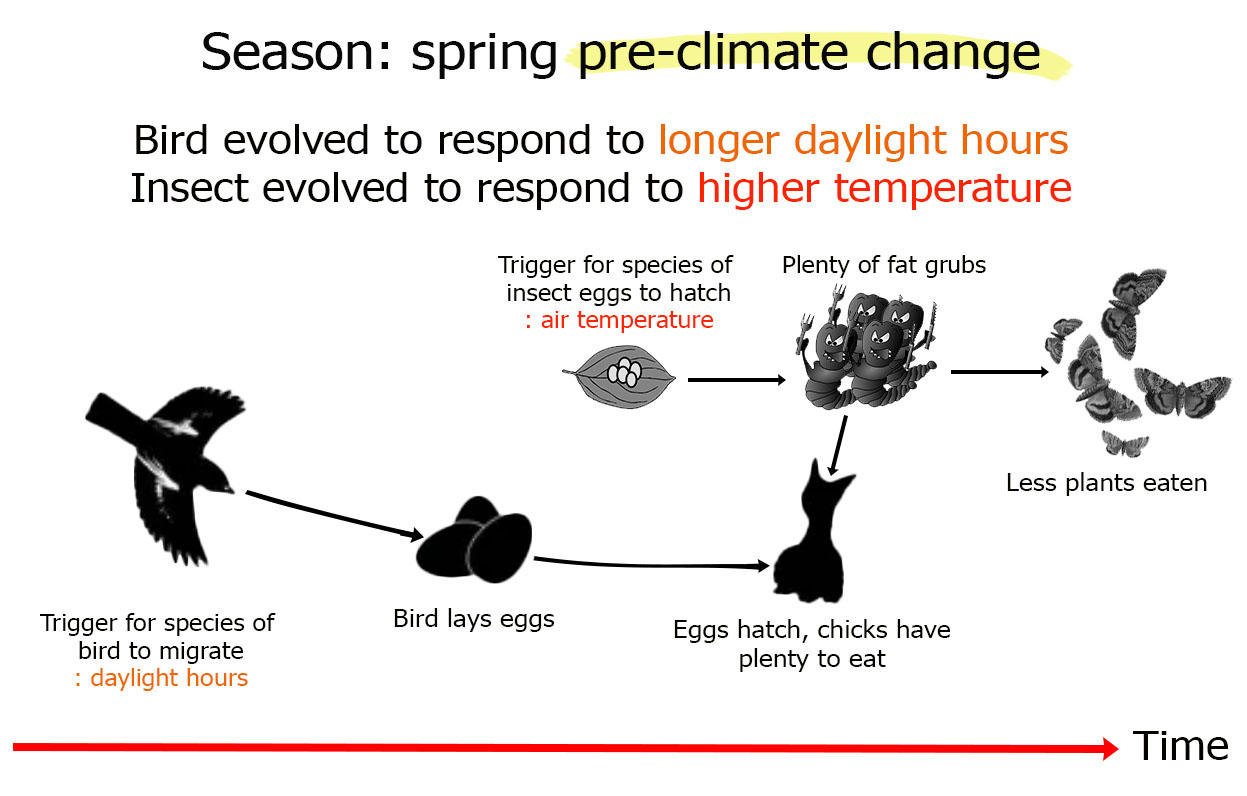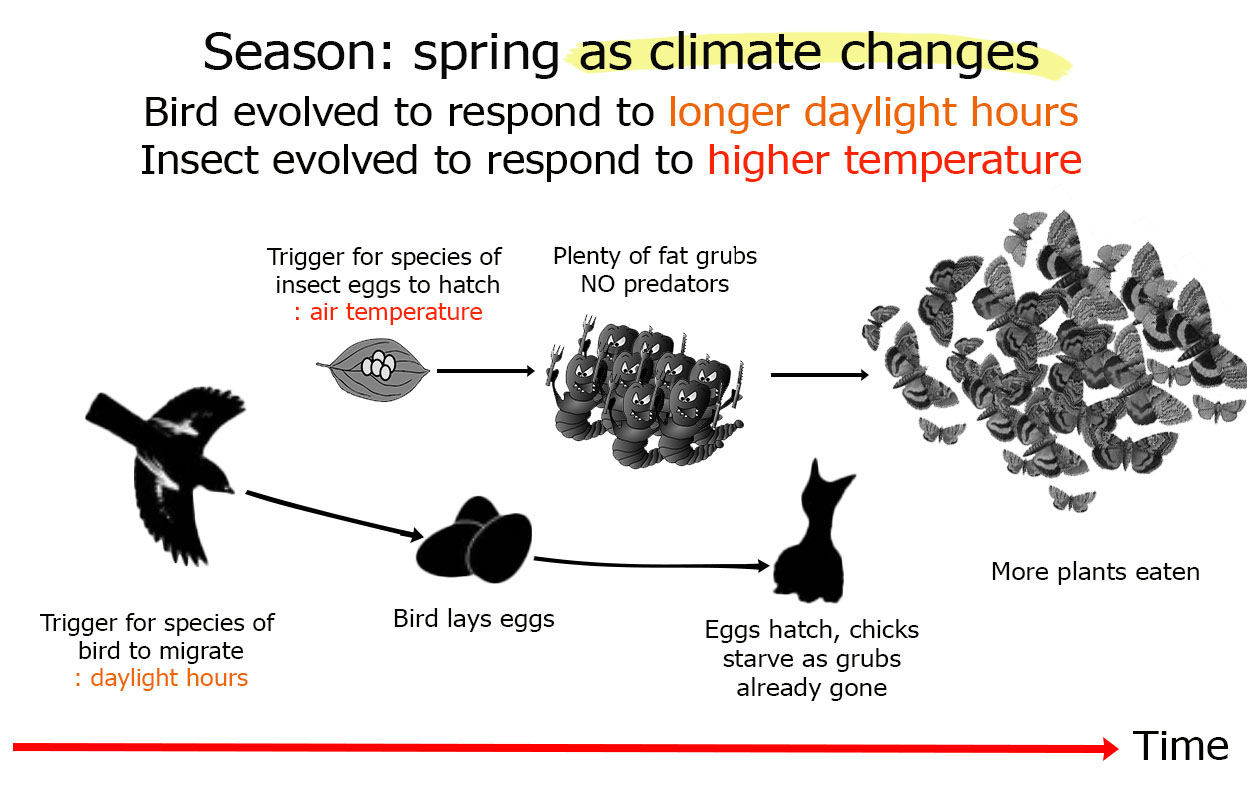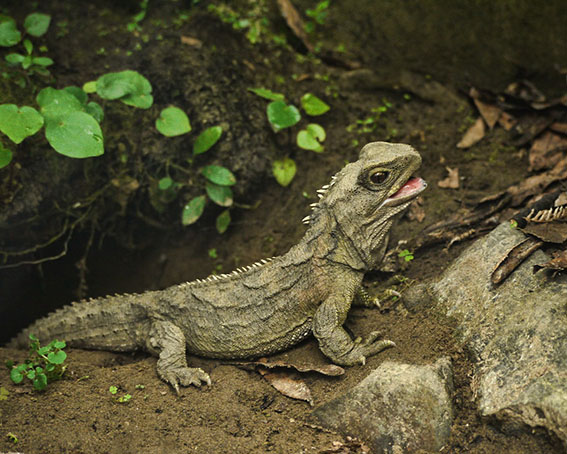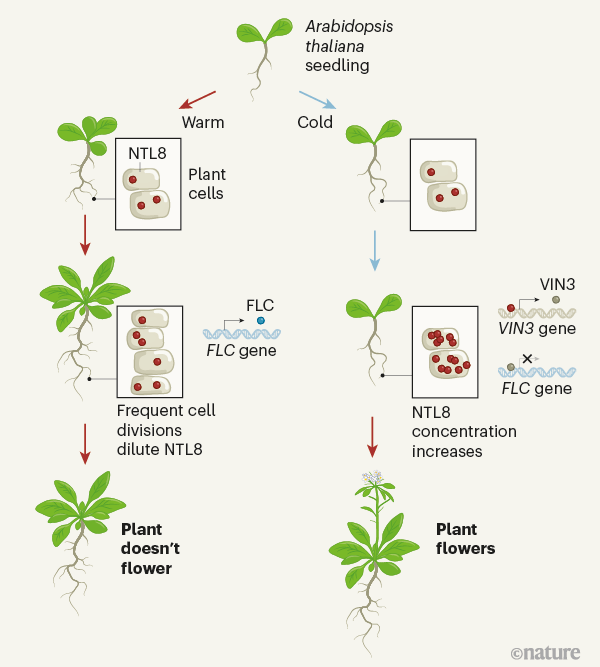“Climate change has caused shifts in species’ distributions, changes in cyclic and seasonal behaviour, and altered population dynamics. In addition, it has caused further disruptions from the genetic to the ecosystem level in marine, terrestrial and freshwater ecosystems.” – Department of Conservation (2020)
“Changing climatic conditions, including warming, also progressively shift plants and animals to higher latitudes, higher elevations or deeper ocean waters. Approximately half of the many thousands of species studied on land and in the ocean already show corresponding responses, leading to climate–caused local population extinctions and shifts in vegetation zones. In the ocean, marine plants and animals including entire communities have shifted their distributions poleward at an average speed of 59 km per decade due to increasing water temperatures. Ocean acidification and decreasing oxygen in the water also play a part. Together all three processes have caused a reorganisation of biodiversity over the past 50 years, especially at the ocean surface. Those species that cannot adjust or move fast enough are at high risk of becoming extinct.” – IPCC Sixth Assessment Report: Impacts, Adaptation and Vulnerability (2022)
Ecosystems are composed of plants and animals—including humans—that depend on one another for different life supporting ecosystem services through biological interactions. Phenological changes are the clearest evidence of climate change because there is no ambiguity; rising temperatures are having undeniable and costly consequences.
Example: A bird species lays eggs based on the number of daylight hours, so that its chicks hatch just as caterpillars are at their fattest (Fig. 1). But as the climate warms the caterpillar eggs hatch sooner. The birds can’t find food, the chicks starve, and meanwhile without predators the caterpillars gorge themselves on plants and produce a lot more eggs that hatch the following season, eating yet more plants (Fig. 2). While some species might adapt by changing their diets, that in turn has an impact on other species. The result is a ripple effect across the
entire ecosystem.


Species on the move…but many unable to move
As the climate warms, some plants and animals that evolved to live on cooler climates are migrating to either higher altitudes or latitudes.
In many places including lakes and reservours, they can’t move because there is nowhere for them to go, for example, cities and farms are in the way or moving uphill to where lakes may be cooler is not possible.
“The fragmented distribution of standing waters in a landscape will restrict redistribution, even for species with high dispersal ability, so that the negative consequences of rapid warming for freshwater species are likely to be much greater than in terrestrial and marine realms..” – Woolway & Maberly, Nature Climate Change, 2020
In the ocean more tropical fish are now being seen in the waters around New Zealand while some sea creatures are heading in the wrong direction:
“In the northwest Atlantic Ocean, slow-moving snails, sand dollars, mussels and other creatures with drifting larvae are spawning earlier, triggered by warmer seas. Unfortunately, that’s when winds and currents are aligned to drive them into even hotter waters. The result is that the ranges of once-abundant species are shrinking.” – Science, 2020
Losing pollinators
If a plant species flowers earlier because the days are warmer, but the migratory bird species that feeds and pollinates it migrates according to the length of the day, the bird won’t arrive in time to pollinate the flower or feed off its nectar. The plant won’t be pollinated and the bird also goes hungry, so both are at risk. If the plant is a food crop it may become scarce or even die out.
Too many boys and not enough girls (Fig. 3).
Too hot for flowers (and fruit) to form
Temperatures fluctuate all the time, so many plants that have adapted to flower in spring take their cue from long periods of cold weather followed by warm weather, ie, a cold winter rather than a few cold days or weeks. Having adapted to the cold, some are no longer flowering in Spring because the winter wasn’t cold enough. No flowers means they can’t be pollinated by bees, and they won’t produce seeds or fruit. If this happens every year, eventually the entire species will die out as it can’t reproduce (Fig. 4).
Natural ecosystems are more resilient to change because they are composed of a high diversity of species that evolved by ‘survival of the fittest’. They don’t depend on endless amounts of artificial fertilisers or pesticides, so while some species will be lost, if they can migrate to cooler climates (either by going higher up mountains or further south), or in the case of coastal ecosystems by moving inland as sea levels rise, they will quickly adapt.
However, natural ecosystems in New Zealand are so fragmented that unless they can take to the air or swim the ocean, few species can move.
This also poses a problem for those restoring ecosystems: should we plant what existed in a place by eco-sourcing local seeds and plants? Or should we also include natives plants from warmer climates, especially long lived plants like trees, which will need to survive a warming world in the coming decades?
Diseases, including those affecting humans, wild species, and livestock are also on the move: see Pandemics, this website.
“Climate change is already boosting the spread of virus sharing among mammals, the animal group thought most likely to pass new diseases on to humans.This is because warming is forcing mammals to move to new habitats in search of cooler, more tolerable climates. As they move, they are more likely to encounter unfamiliar species – providing an opportunity for novel virus transmission. Scientists say this “ecological transition” has already begun – and will continue to worsen regardless of our efforts to rein in rising global emissions. .” – Dunne, 2022




